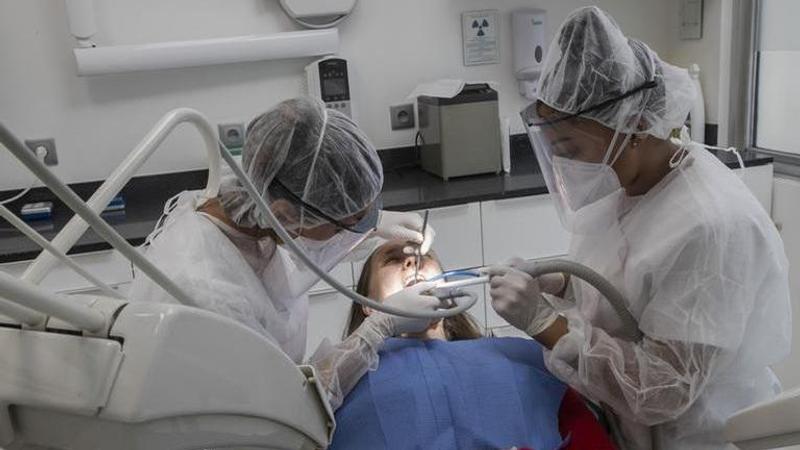Published 16:11 IST, December 17th 2020
COVID-19 spread during dental treatment could be lowered with slower drill rotation, study says
Using a slower drill rotation during dental procedures could help prevent COVID-19 aerosol spread and improve safety for both patients and the dental practice workforce, according to a study published on Thursday.

Using a slower drill rotation during dental procedures could help prevent COVID-19 aerosol spread and improve safety for both patients and the dental practice workforce, according to a study published on Thursday.
The researchers at Imperial College London and King's College London in the UK noted that dental treatment can pose a high risk of viral transmission because the tools that are used often produce aerosols, which can contain a high number of copies of the novel coronavirus.
The aerosols are generated when saliva mixes with water and air streams used in dental procedures, they said.
The study, published in the Journal of Dental Research, measured and analyzed aerosol generation during the procedures and suggested changes to prevent contamination in the first place to improve safety.
It suggests that dentists avoid using dental drills that use a mixture of air and water as the abrasion coolants, and carefully select and control drill rotation speeds for those instruments that only use water as a coolant.
Dental practices have had to introduce new room decontamination processes and personal protective equipment measures which have dramatically reduced the number of patients that can be treated in a single day, the researchers said.
Dentists need to leave long intervals between treatments, leaving rooms unoccupied to allow aerosols to dissipate, which limits patient access and is challenging financial feasibility for many dental practices worldwide, they said.
The latest study identified parameters that would allow some procedures such as dental fillings to be provided while producing 60 times fewer aerosol droplets than conventional instrumentation.
"Aerosols are a known transmission route for the virus behind COVID-19, so we have tested and suggested solutions that reduce the amount of aerosols produced in the first place,” said study lead author Antonis Sergis from Imperial College London.
These could help reduce the risk of transmission during dental procedures, Sergis added.
The results are being included as evidence in guides for dental practices in the UK during the pandemic, the researchers said.
The team used dental clinical rooms at Guy's Hospital in London to test how aerosols are generated during procedures such as decay removal, applying and polishing fillings, and adjusting prostheses.
The researchers measured the aerosol generation using high-speed cameras and lasers and then used these findings to suggest modifications.
They found that using air turbine drill types, which are the most common type of dental drill, creates dense clouds of aerosol droplets that spread as fast as 12 meters per second and can quickly contaminate an entire treatment room.
The researchers noted that just one milliliter of saliva from infected patients contains up to 120 million copies of the virus, each having the capacity to infect.
They tested a different type of drill, known as high torque electric micromotor, with and without the use of water and air streams.
The scientists found that using this drill type at low speeds of less than 100,000 rpm without air streams produced 60 times fewer droplets than air turbine drill types.
They also found that aerosol concentration and spread within a room are dependent on the positioning of the patient, the presence of ventilation systems, and the room's size and geometry.
It is also influenced by the initial direction and speed of the aerosol itself, which can be affected by the type of cutting instrument, and the amount and type of cooling water used, according to the researchers.
By understanding how to reduce the amount of aerosol generated in the first place, these suggestions by the researchers could help dentists practice more and help patients get the treatment they need.
(IMAGE CREDITS:AP)
Updated 16:11 IST, December 17th 2020



